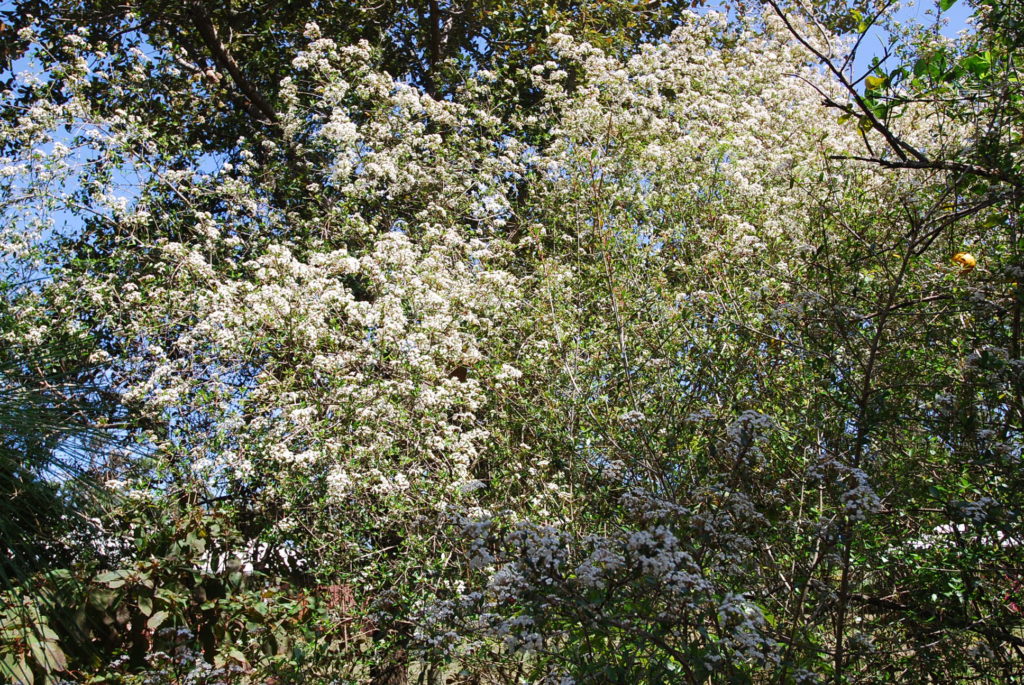
Walter’s Viburnum
Viburnum obovatum
Walter’s Viburnum is also called Small Viburnum and is native to the edges of rivers and other wetlands north of Palm Beach County thru the Southeastern U.S.. It is commonly found naturally just north of Lake Okeechobee and west of the lake.
Moderately fertile soil with some organic matter is best. It is not tolerant of salt air or saltwater flooding.
This is a suckering shrub that forms a thicket of sprouts that fill in and create a dense hedge. It can be clipped or allowed to form a natural screen. The dark green elliptic leaves are 1-1.5 inches long.
The numerous heads of fragrant, small white flowers bloom in March and April. These are followed by green, turning to red and finally black, small flat berries. These ripen in August and are eaten by wildlife. The fruit, with a single flat seed, has a sweet licorice flavor.
The best site to grow Walter’s viburnum is one with moist soil and moderate organic matter. It is tolerant of dry soil once established.
Plant as a hedge or along a lake edge mixed with Myrsine, Wax Myrtle, Dahoon Holly, Saw Palmetto, Marlberry, Cocoplum, Virginia Willow, Red Maple, Laurel Oak, Slash Pine, Florida Elm, Hackberry, Elderberry and Swamp or Marsh Fern as a ground cover.
Small Viburnum should not be planted where it’s suckering habit may become a problem. Give it plenty of room to wander.